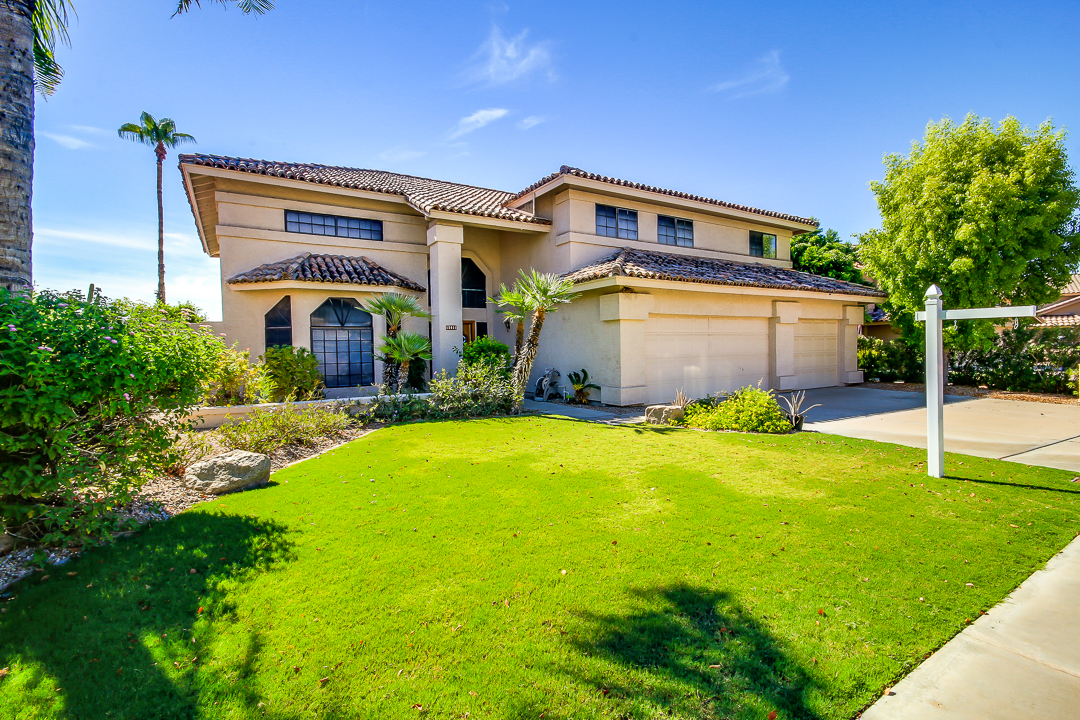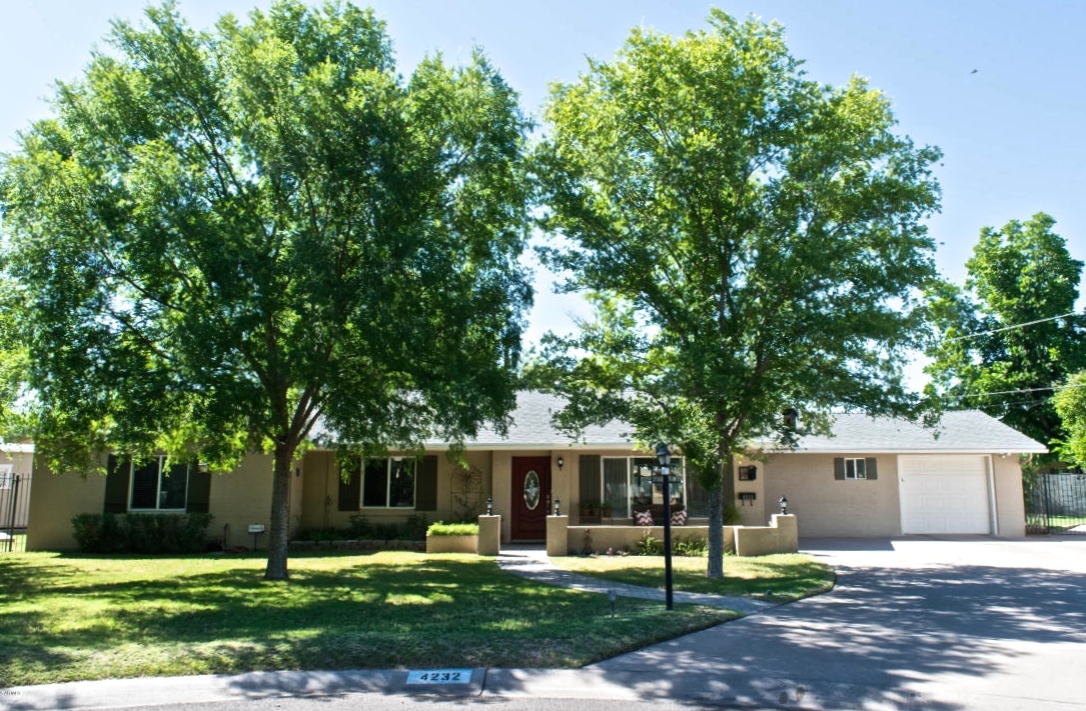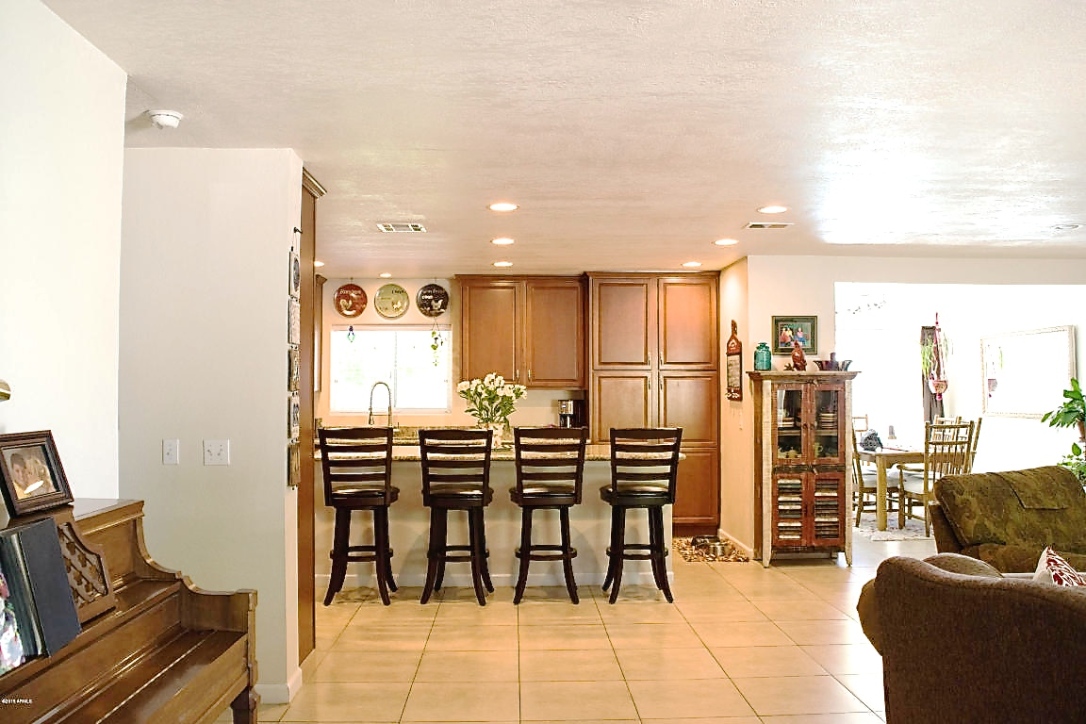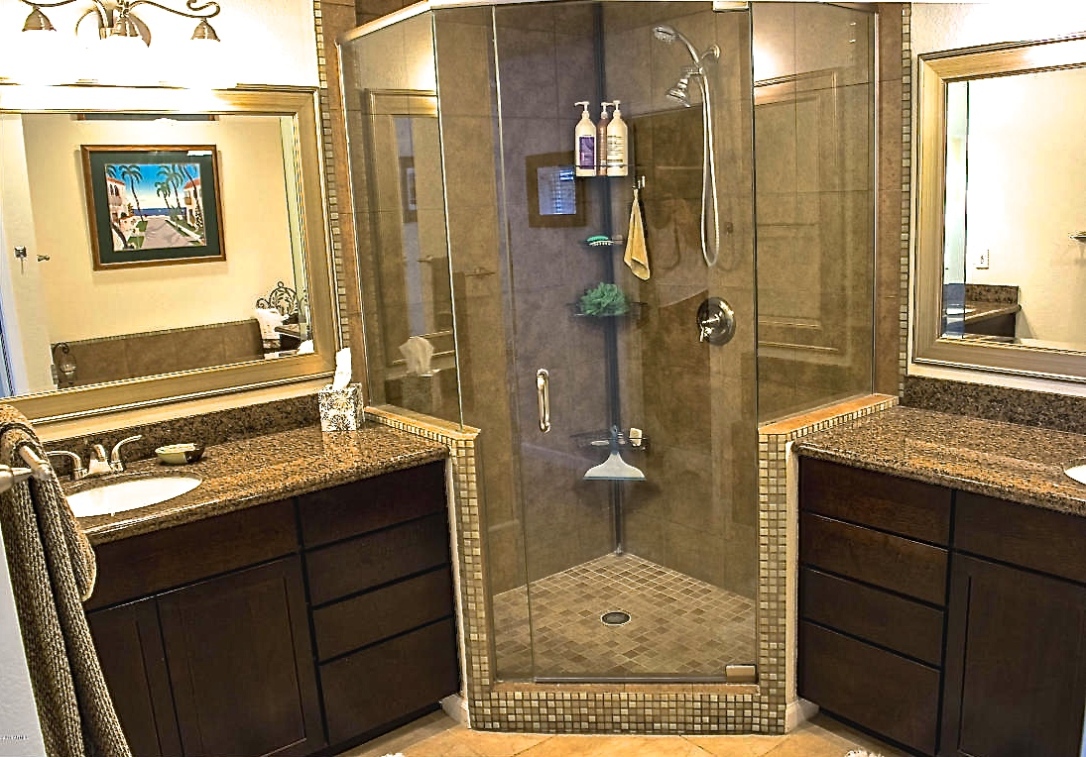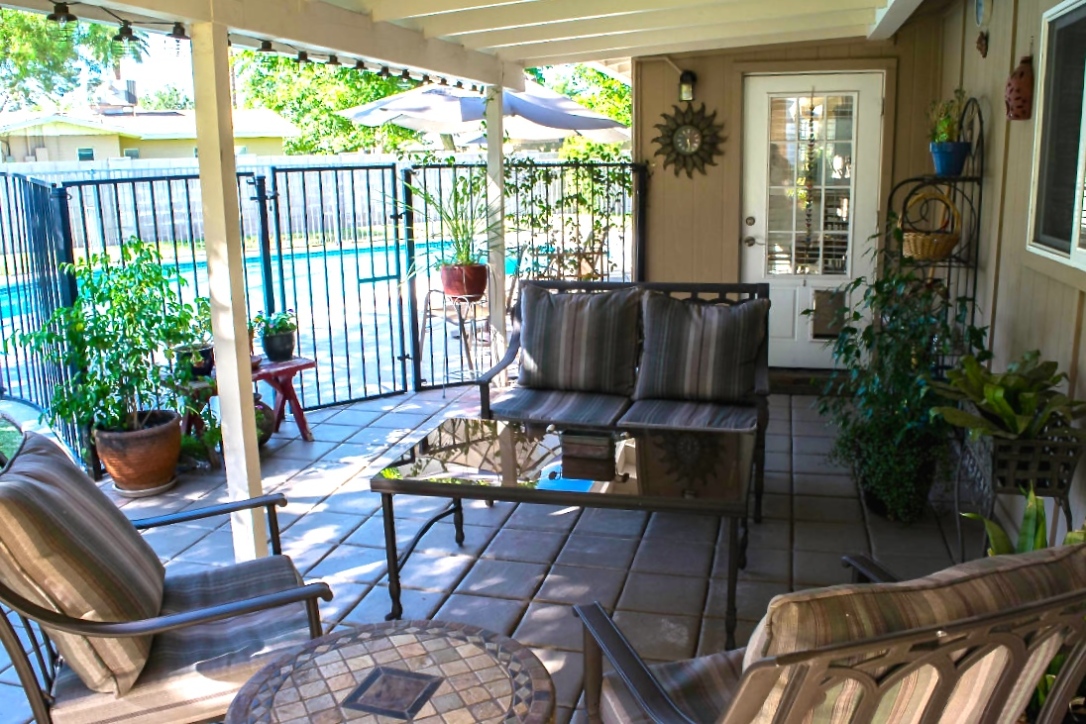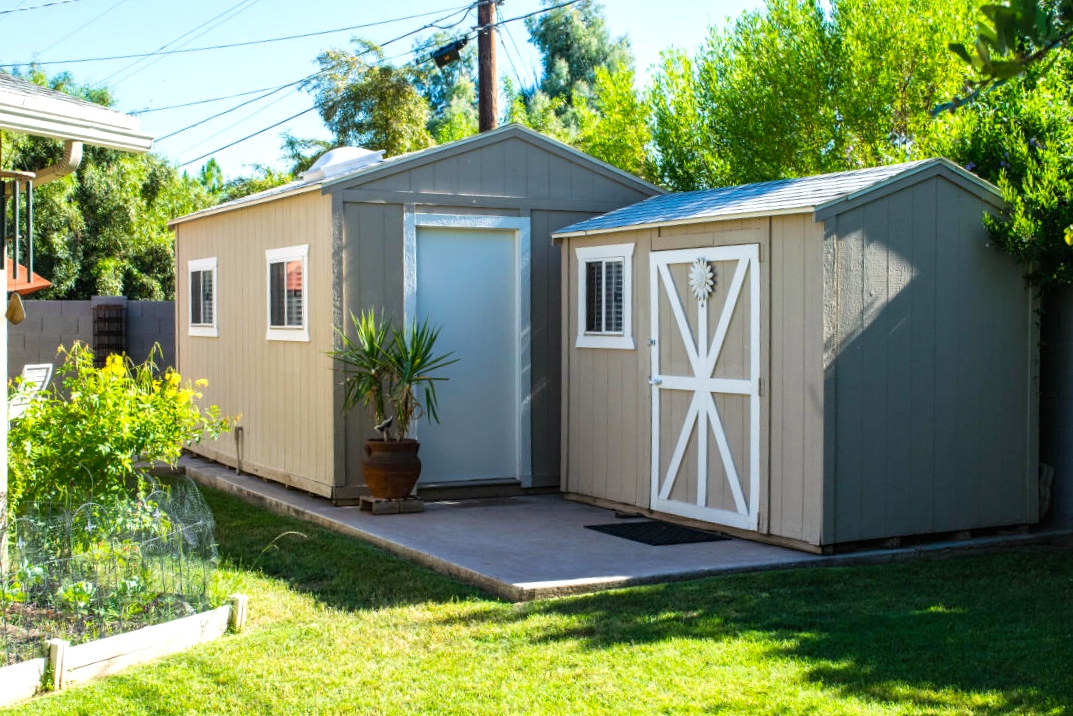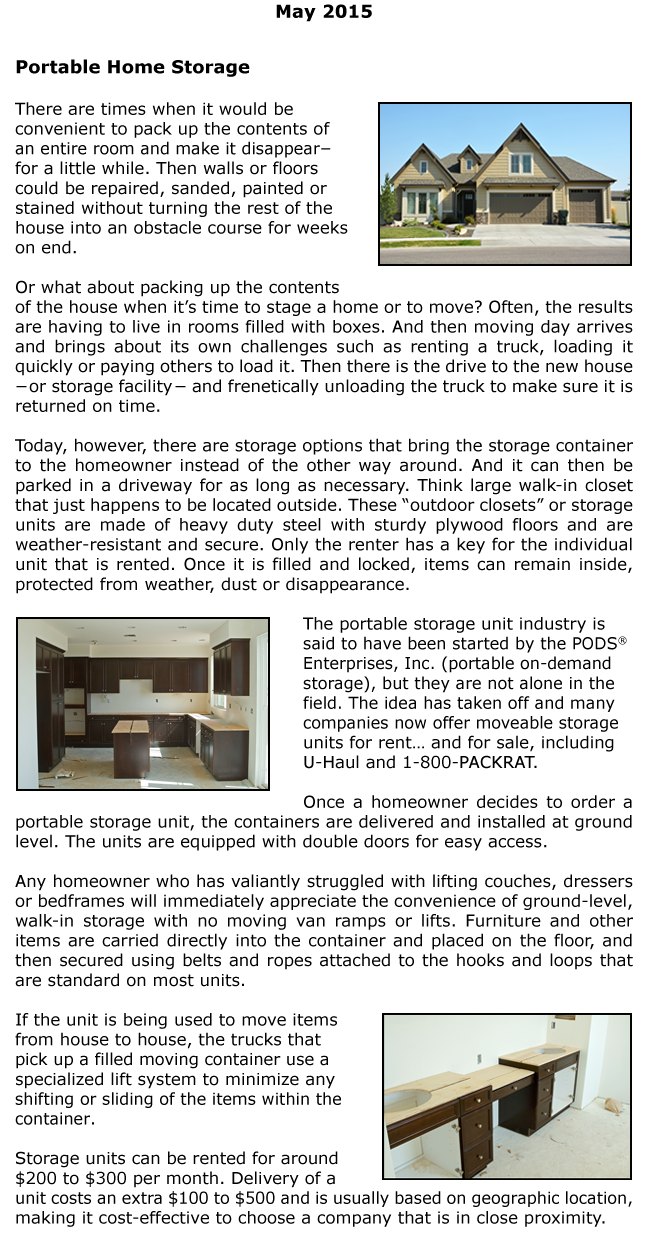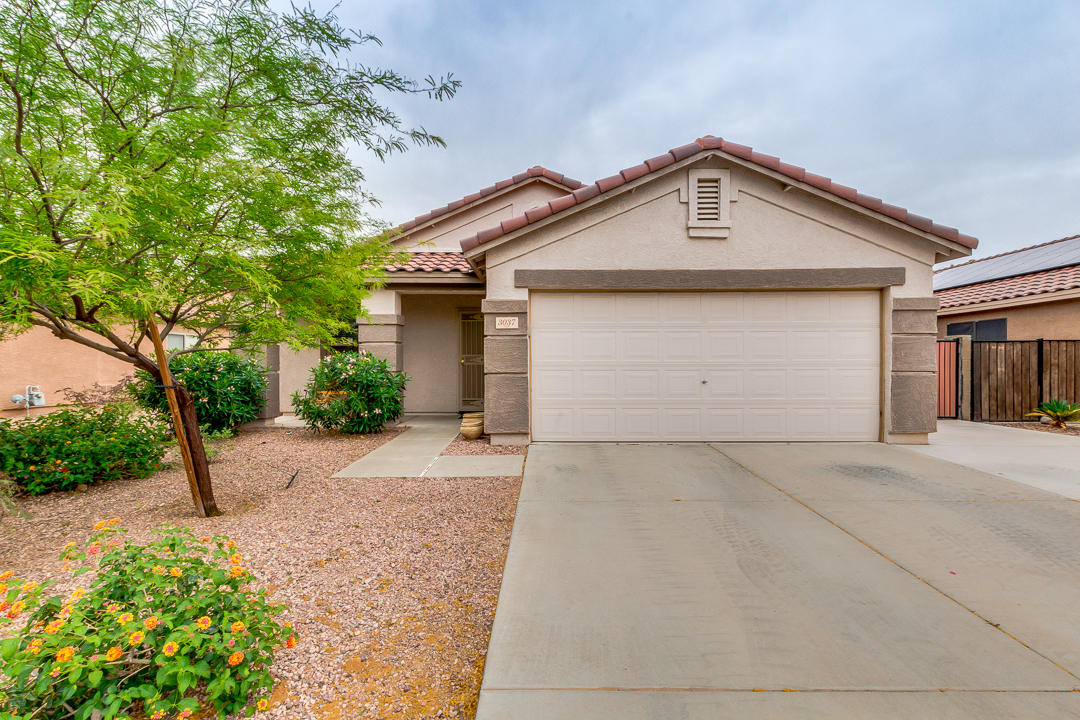
11 Home Hazards to Avoid
By Marisa Villarreal
If you ask most people where they feel the safest, chances are the answer will be in their own home. But home safety depends on a variety of factors, and potential dangers run the gamut from structural hazards like termites and faulty wiring to problems related to a home’s location and siting, such as drainage and flooding. Here are 11 of the most common hazards that homeowners are likely to encounter. To keep your home truly safe, be aware of these hazards and consider how they can be remedied.
 Source: shutterstock.com
Source: shutterstock.com
Deadly lead
We all know it’s dangerous, but lead paint is especially bad for children and pets. Homes built before 1980 may contain this hazardous stuff. Test kits can confirm lead’s presence in your home, but hire a certified professional to remove it.
 Source: The Corcoran Group
Source: The Corcoran Group
Indoor air quality
Good indoor air quality reduces the impact of allergies and asthma. One good way to eliminate allergens is by opting for hardwood or laminate flooring instead of carpeting. An air-filtration system or new air conditioner can help control allergens. Houseplants can also help improve indoor air quality — as well as your mood.
 Source: megankhines via Flickr Creative Commons
Source: megankhines via Flickr Creative Commons
Radon watch
This radioactive gas can move into your house through cracks in the foundation. Radon is the second leading cause of lung cancer, so it’s important to mitigate it if it’s found in your home. Sealing cracks in the foundation is one step you can take yourself; other solutions may depend on your home’s foundation.
 Source: State Farm via Flickr Creative Commons
Source: State Farm via Flickr Creative Commons
Rising water
Flooding is one of the most common hazards for homeowners, regardless of where they live. Whether the water rises because of excessive snowmelt or a serious rain — or a damaged pipe in the basement — be prepared. Particularly if your home is in a flood-prone region or an area with a high water table, make certain you have a sump pump in good working order that can deal with excess water.
 Source: shutterstock.com
Source: shutterstock.com
Termites
Hire a professional to regularly inspect for termites. Preventing infestations before they happen will save you time and money. Termites love damp wood, so repair indoor leaks immediately, and never store your firewood near your home’s foundation or crawl space.
 Source: State Farm via Flickr Creative Commons
Source: State Farm via Flickr Creative Commons
Electrical fires
Most electrical fires result from faulty outlets or old wiring. Protect your home by replacing faulty wiring and outlets, and installing an Arc Fault Circuit Interrupter (AFCI). The U.S. Consumer Product Safety Commission estimates that the use of AFCIs could prevent 50 percent of electrical fires.
 Source: Judy van der Velden via Flickr Creative Commons
Source: Judy van der Velden via Flickr Creative Commons
Carbon monoxide
This toxic gas is the number-one cause of poisoning deaths in the United States, but such tragedies can be prevented by installing a CO detector, which will alert you to carbon monoxide’s presence in your home. Never leave cars or grills running in a small space, and properly ventilate fuel-burning appliances like furnaces, water heaters, ovens and dryers to prevent CO buildup.

Asbestos
Designated a carcinogen in the 1970s and largely banned, asbestos can still be found in older homes. If you discover asbestos-containing materials in your home, don’t panic. If it’s not damaged or disturbed, asbestos is not likely to pose a health risk. With a little research, you can learn strategies for dealing with its discovery and arranging for professional removal.
 Source: shutterstock.com
Source: shutterstock.com
Mold
Unsightly and hazardous to your health, mold is a problem that should be tackled early, as soon as it’s discovered. Prevent both visible and undetectable mold by keeping moisture levels low and quickly drying up any standing water. Once mold spreads, you’ll need to act quickly to remove it completely or hire a professional.
 Source: Sam Fam via Flickr Creative Commons
Source: Sam Fam via Flickr Creative Commons
Falls
Falls are one of the leading causes of unintentional injuries in the United States, according to the National Safety Council. Remove tripping hazards from hallways, stairs, and walkways. Avoid standing on a chair, table or other surface to tackle a quick job. And when you use a ladder, make certain it is secure.
 Source: Graham Richardson via Flickr Creative Commons
Source: Graham Richardson via Flickr Creative Commons
Gas leaks
Although natural gas is touted as one of the safest and cleanest-burning fossil fuels, a gas leak can pose serious risk, whether the leak is detected or not. If you suspect a gas leak — usually accompanied by a sulfuric, rotten egg odor — leave the house immediately and contact your gas provider.
Just Listed in Phoenix, AZ!
New lakefront listing in South Phoenix! Click the link for more info: http://1581137th.isnow4sale.com
GORGEOUS Arcadia Lite Home!
GORGEOUS ranch style home in the highly sought after arcadia lite area! Open floor plan, oversized kitchen island with granite countertops for entertaining, diving pool and TWO master bedrooms! Did I mention the separate “playhouse”/”man cave”/”she shed” in the back? You will love this beautifully maintained home. If you have any questions please don’t hesitate to reach out!
Monica Pendrick – MonicaPendrick@gmail.com – (602) 753-8710
8 steps to buying a home
8 Steps to Buying a Home as presented on Kw.com!
The decision to purchase your first home is one of the biggest and best choices you could ever make. After all, a home is the largest – and most emotional – investment most people will face in their lifetime. So, how do you know if it’s the right time for you to buy?
There is never a wrong time to buy the right home. The key is finding the right buy and taking the time to carefully evaluate your finances.
A home purchase is an important step that can provide many advantages. Purchasing your own home is a great investment that can deliver several financial benefits – equity build up, value appreciation, automatic savings plan – not to mention a new sense of pride!
Step 2: Hire an Agent
When you’re looking for a real estate professional to help you, know that above all else, good agents put their clients first. This is your dream, and your agent is your advocate to help you make your dream come true.
A great real estate agent will:
- Educate you about the current conditions of the market.
- Analyze what you want and what you need in your next home.
- Guide you to homes that fit your criteria and budget.
- Negotiate on your behalf to get you the best deal possible.
- Check and double-check paperwork and deadlines.
- Inform and discuss with you, and suggest solutions to solve any problems that may arise.
Step 3: Secure Financing
To make the financing process as painless as possible, ask your agent to introduce you to the preferred financing consultant. This professional will work with you and your agent to make sure the financial aspect of your home purchase is stress free.
So you’ve met with your trusted advisors, and now you’re ready to begin your search. But how or where do you start? There are a lot of homes out there, and diving in without a guide can become overwhelming and confusing. The right home will meet all your important needs, and as many of your additional wants as possible.
Determine your needs and ask yourself:
- What amenities are crucial for you and your family?
- How much space do you need and why?
- Which is more critical: location or size?
- Would you be interested in a fixer-upper?
- How important is home value appreciation?
- Is neighborhood stability a priority?
- Is accessibility to main routes a priority?
- What features are not negotiable in your new property?
Step 5: Make an Offer
Once you’ve found a home you love, the next step is deciding on a price. It’s important to remember that a home is an investment. Your agent can give you information on other properties in the neighborhood to help you ensure you make an informed decision when it comes to price. Look to your agent to explain and guide you through the offer process.
Some things to consider when deciding on the best price point are:
- List price – Start with the price point that the home is listed at. This will give you a base when looking at the home’s value.
- Market Analysis – Your agent will give you an idea of comparable home values in the neighborhood to help you decide if the price point is on par.
- Improvements – Your agent can give you a list of improvements made to the home and help you determine its market value.
Step 6: Perform Due Diligence
Once you are under contract, you’ll have 10 days (unless otherwise coordinated) to complete a full home inspection. Hire a home and termite inspector to thoroughly go through the home and point out any major problems.
Knowing what work has and has not been done to your home is important information to have in the buying process. While updates can increase your home value, damages can take money out of your pocket. Your main concern is the possibility of structural damage, which can come from water, shifting ground or poor construction.
Very often a problem appears to be big, but can be fixed with very little effort and not a huge budget.
Step 7: Close
Once you’ve determined a price point you’re comfortable with, you’re in the “home” stretch! But, in order to ensure that you don’t put the property purchase at risk, you have a couple responsibilities that you’ll need to keep in mind:
- Staying in control of your credit and finances – Do not make any large purchases during this time. It’s important to keep your financials steady throughout the buying process. Talk to your financial consultant for guidance.
- Keeping in touch with your agent and financial consultant – It’s important to stay in constant communication with your Keller Williams agent and financial guide during this process. Be sure to return all phone calls and complete paperwork promptly. Also, don’t be afraid to ask questions. Your team is there to help you!
Step 8: Protect Your Assets
Congratulations, and welcome home! The home-buying process is complete, which means it’s time for your maintenance plan! It’s now your responsibility, and in your best financial interest, to protect your investment for years to come. Performing routine maintenance on your home’s systems is always more affordable than having to fix big problems later. Be sure to watch for signs of leaks, damage and wear.
And remember, just because the sale is complete, your relationship with your Keller Williams agent doesn’t need to end! After you buy, your agent can still help you – providing information on the real estate market, finding contractors and repair services, and even tracking your home’s current value.
Happy home-owning!
Price Your Real Estate Listings to Sell – KW Blog
Portable Home Storage from Advantage Inspection Service
It’s almost here!! Keller Williams Red Day May 14, 2015!
We are so excited for red day and I love watching the countdown on our website. We just did another site visit and we’re getting all of the last minute details in order. In an effort to make this one of the best transformations, we are looking for donations from people all over the valley, heck all over the country, to support this amazing cause.
If you or anyone you know would like to make a donation to the Boys and Girls club please let me know!
Here is the site where you can learn more about the cause, register to volunteer or make a donation. When making a donations make sure to put REDDAY in the “referred by or make a gift in honor of” section so they know where they money should go!
Renewed Buyer Enthusiasm
Who doesn’t like good news?! Michael Orr the Director of the Real Estate Center at W.P. Carey School of Business at ASU has gathered some stats via ARMLS that are outstanding for 2015!
Based on normal listings under contract across Maricopa and Pinal Counties we find:
- Home priced below $150,000 are up 7% from 1,940 to 2,077
- Homes priced from $150,000 to $250,000 are up 35% from 2,527 to 3,406
- Homes priced from $250,000 to $400,000 are up 38% from 1,582 to 2,176
- Homes priced from $400,000 to $600,000 are up 33% from 586 to 780
- Homes priced from $600,000 to $1,500,000 are up 12% from 406 to 454
- Homes priced over $1,500,000 are down 10% from 98 to 88
Overall, normal listings under contract are up 26%!!!! Clearly the price ranges from $150,000 to $600,000 are seeing a large increase in buyer activity which is showing up as more showings, more offers and far more signed contracts than last year.
Orr believes this is a very healthy development for the market and is probably caused, at least in part, by two major factors:
- Lenders have slowly started to relax their previously tight underwriting guidelines
- More people who were foreclosed or completed a short sale are returning to home ownerships – YAY!
Supply is now starting to fall just as demand is increasing. If this trend continues throughout the spring season, 2015 is likely to be a much better year than 2014 for home sellers!
- Lenders have slowly started to relax their previously tight underwriting guidelines
- More people who were fore
Rentals Hold Steady
Rentals in Phoenix according to Debra Hill Fox, Arizona Sales Managaer at NPM Staffing, INC educator:
The home rental arena has seen a consistent incline for the past several years. Average rental prices and vacancy rates have become the hot topics as industry reports continue to point out that renting is the popular housing choice in Phoenix metro, especially for the millennials. It has become normal to see apartment communities popping up all over the Valley. Rental rates have been steadily increasing from an average of $750 in 4th quarter 2012 to an average of $808 in 4th quarter 2014. However, in 2015 we’ve seen rental rates remain fairly steady from the 2014 increases as the homeownership market is coming back.
Below are some average Phoenix metro statistics related to rentals:
ASKING RENT
– Highest rent: South Scottsdale: $1,126 ($981 in 4th quarter 2013)
– Lowest rent: West Central Phoenix $559 ($583 in 4th quater 2013)
The end of 2014 was the 10th consecutive quarter of year over year asking rent increases with 27 to 30 submarkets having higher asking rents than they did in 4th quarter 2013. In fact, the last quarter of 2014 recorded the highest ever average rents in Phoenix metro. At the same time, 2015 eviction filings have declined and complaints for fair housing have risen, which suggests a slowing trend in future rent growth.
VACANCIES
– Highest vacancy: South Scottsdale: 17.5% (11.8% in 4th quarter 2013)
– Lowest vacancy: NW/SW County 2.7% (8.1% in 4th quarter 2013)
NEW CONSTRUCTION
The year 2014 generated 24 projects comprising of 5,658 units added to the market. In 4th quarter 2014 there were 34 projects comprising of 8,298 units scheduled or under construction in 2015.
The rental market in Phoenix metro will continue to remain strong throughout this year. It will be interesting to see how steady rental rates and the growth of homeownership will impact the real estate market overall.

